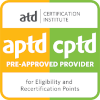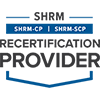Certificate Suite Details
Key Features
- Mobile-friendly
- Audio-enabled
- Badge and credit-awarding
- Real-world case studies
- Fully accessible
- Expert-supported
- Video content
- Games & Flashcards
Certificate Preview
Certificate Description
Learner Feedback
Courses Included in this Certificate
Course Description
Introduction to Web Design is an introductory-level course providing the groundwork for building effective websites optimized in design, structure, usability, and accessibility. You will learn the fundamental principles of visual design and user experience to build webpages that are aesthetically pleasing and intuitive to navigate. The course will guide you through the website design process, from identifying your content strategy and information architecture, to choosing a layout and other design elements such as visual hierarchy, whitespace/negative space, color, and typography. During the course, you will also learn how to launch a website by selecting a domain host and website address. The course also introduces the three main website languages: HTML, CSS, and JavaScript.
Course Credits
Course Description
This is an introductory-level course designed to provide a fundamental understanding HyperText Markup Language, commonly abbreviated as HTML. HTML is the standard markup language used to create webpages. Along with CSS, and JavaScript, HTML is a cornerstone technology used to create webpages as well as to create user interfaces for mobile and web applications. The course will cover HTML tags for images, links, lists, and tables, as well as how to organize page structures. Learners will gain experience using various HTML elements by developing a variety of different HTML documents through several lab assignments.
Course Credits
Course Description
This course will introduce basic features of Cascading Style Sheets, or CSS. CSS is a versatile programming language that is used to style web pages by specifying how HTML and XML documents should appear. CSS makes it possible to control the presentation of elements on a page, including their color, dimensions, position, and behavior. A series of lab exercises provide students with opportunities to practice the tools and concepts they learn throughout the course.
Course Credits
Course Description
This course introduces learners to the fundamentals of scripting and basic programming concepts while exploring the ways JavaScript can add functionality to web pages. Through several lab exercises, learners will progress from developing simple JavaScripts to more complex functions. From this base knowledge, they will then be introduced to popular JavaScript libraries and other similar tools and frameworks in use today.
Course Credits
Course Description
This course will introduce you to responsive web design (RWD) by reviewing basic principles and foundational techniques for designing websites that are viewable on all devices. While this is an introductory course, the material does require that the learner has at least a basic understanding of HTML and CSS. After completing the course, students will be able to create custom CSS layouts and use media queries to optimize websites for different screen sizes.
Course Credits
Notes
This course has an "Ask the Expert" feature, which submits your questions directly to an expert in the field you are studying. Questions are answered as quickly as possible and usually within 24 hours.
As an Accredited Provider, MindEdge offers for its learning events that comply with the Continuing Education and Training Standard.
Learners must achieve an average test score of at least 70% to meet the minimum successful completion requirement and qualify to receive credit. Learners will have three attempts at all graded assessments.


